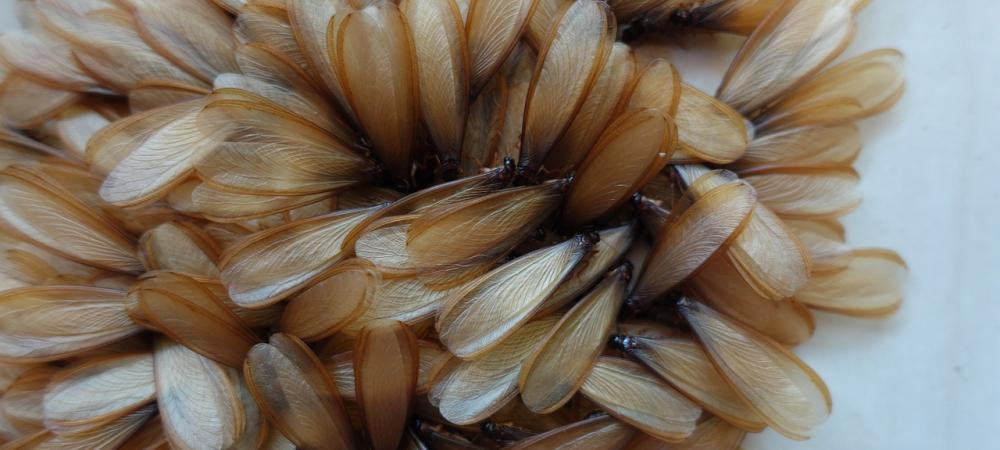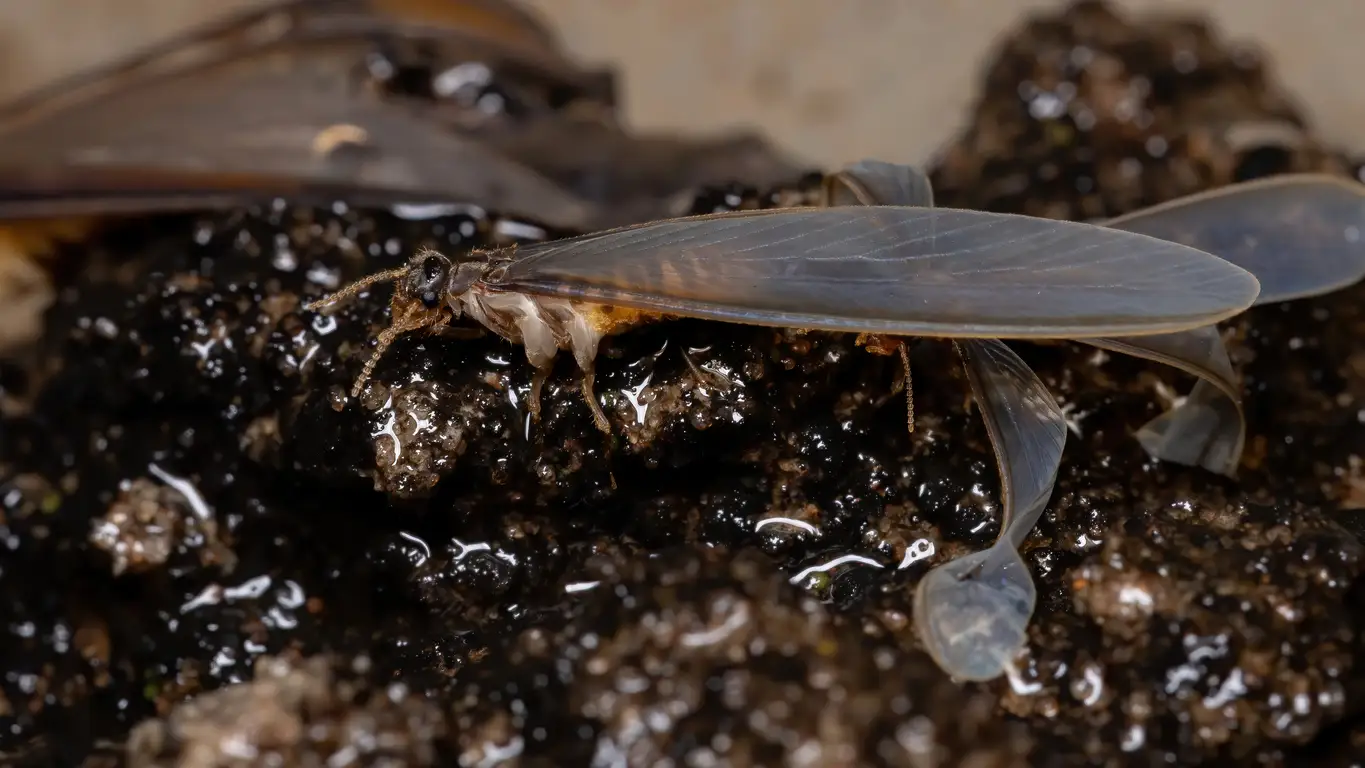Understanding and Managing Termite Swarmers: A Guide for Illinois Homeowners

Termites are more than just a nuisance—they can be a homeowner's nightmare if left unchecked. Illinois' unique climate creates the perfect conditions for termites, especially swarmers, to thrive. Here’s what you need to know to protect your home and prevent costly damage.
What Are Termite Swarmers?
Termite swarmers, also called alates, are winged adults responsible for reproduction and colony expansion. They emerge in large groups, often mistaken for flying ants, searching for a new place to establish a colony. The appearance of swarmers is a critical warning sign of a potential infestation nearby.
What Do Termite Swarmers Look Like?
- Size: Termite swarmers are about 1/4 to 1/2 inch long.
- Wings: Termite swarmers have two pairs of wings of equal length. These wings are translucent or pale and may appear slightly veined.
- Body Shape: Their bodies are straight and narrow, with no pinched waist (unlike ants).
- Antennae: They have straight antennae, as opposed to the bent antennae seen in ants.
- Color: Depending on the species, termite swarmers are typically black or brown.
- Behavior: They emerge in large numbers, often near windows, doors, or light sources.

Are Termite Swarmers Dangerous?
While swarmers don’t cause direct damage, their presence signals that an established colony might be nearby. Termites can cause significant structural damage, feeding on wood and cellulose-based materials.
Are Termite Swarmers Common in Illinois?
Illinois has a humid continental climate, characterized by hot, humid summers and cold winters. This combination provides ideal conditions for termites, particularly Eastern Subterranean Termites, the most common species in the state. Key factors contributing to termite activity include:
- Seasonal Warmth and Humidity: Termite swarmers are most active in spring and summer, particularly after rain. Illinois’ hot, humid summers create ideal conditions for termites to thrive.
- Soil Composition: The state’s rich, loamy soil provides a perfect environment for subterranean termites, the most common species in Illinois.
- Urban and Suburban Settings: Cities like Chicago, Springfield, and Peoria, as well as suburban areas, offer a mix of older homes and structures, many of which are vulnerable to termite infestations.
When Do Termite Swarmers Appear in Illinois?
In Illinois, termite swarmers typically emerge in the spring when temperatures warm up to around 70°F. They are most active during the day, often after rainfall, which provides the moisture they need to survive and thrive.
Signs of Termite Swarmers Around Your Home
Termite swarmers are often the first visible sign of a potential termite infestation, and catching them early is critical to protecting your home. These winged pests appear when a colony matures and is ready to expand. For Illinois homeowners, particularly during the spring and summer months, recognizing the signs of termite swarmers can save you from costly repairs. Here's what to look out for:
1. Swarming In or Around Your Home
Termite swarmers often emerge during daylight hours, particularly after rain. They are attracted to light, so you may see them flying near windows, doors, or light fixtures. Swarming usually lasts for a short period, but if you see it happening indoors, it’s a clear indication that termites are already inside your home.
2. Discarded Wings
After swarmers find a mate, they shed their wings before starting a new colony. These wings are often found in piles near:
- Window sills
- Door frames
- Baseboards
- Outdoor lighting fixtures
The presence of discarded wings indoors is a strong signal that termites have gained access to your property.
3. Mud Tubes
While swarmers indicate an expanding colony, you should also look for mud tubes. Subterranean termites build these pencil-thin structures as protective tunnels between their colony and food sources. Check along:
- Foundation walls
- Crawl spaces
- Exterior walls
4. Peeling Paint or Bubbling Walls
Termites create moisture as they tunnel through wood, which can cause paint to peel or blister. This damage may mimic water damage but is often a hidden sign of termite activity.
5. Hollow or Damaged Wood
Tap on wooden surfaces in your home. If they sound hollow or break easily when pressed, termites might be feeding inside. Look for small holes in wood or wood that crumbles when touched.
6. Frass (Termite Droppings)
Drywood termites leave behind small, pellet-like droppings known as frass. These droppings often accumulate in piles near the site of infestation, such as under damaged wood or near baseboards.
What Should You Do If You Spot Termite Swarmers?
- Don’t Panic: Swarmers don’t cause structural damage themselves, but their presence signals a colony is nearby.
- Identify the Insect: Ensure they are termites, not ants. Termites have straight antennae, uniform wings, and thick waists.
- Inspect Your Home: Look for additional signs of termite activity, like damaged wood or mud tubes.
- Capture Evidence: Take photos or collect some of the swarmers or wings.
- Contact a Professional: An experienced pest control service like Crist Termite & Pest Solutions, Inc can assess your property and implement effective treatments.
Why Professional Termite Control Is Vital
DIY treatments might address visible issues, but termites often work deep within walls and under foundations. Our local pest control experts at Crist Termite & Pest Solutions, Inc understand the specific threats and conditions unique to the area, offering targeted solutions, such as:
- Comprehensive Inspections: Experts use advanced tools to detect hidden infestations.
- Targeted Treatments: Solutions like baiting systems and liquid termiticides are tailored to the Illinois climate.
- Ongoing Monitoring: Preventative measures ensure termites stay away year-round.
Annual termite inspections and proactive treatments can save you thousands of dollars in potential repairs. Learn more about our termite treatments.
Stay Vigilant This Swarming Season
If you notice termite swarmers around your Illinois home, it’s crucial to act quickly. Contact a pest control professional to assess the situation and recommend the best course of action. With the right precautions, you can protect your home and enjoy peace of mind.
Don’t wait—schedule your termite inspection today and safeguard your Illinois home from costly damage.
